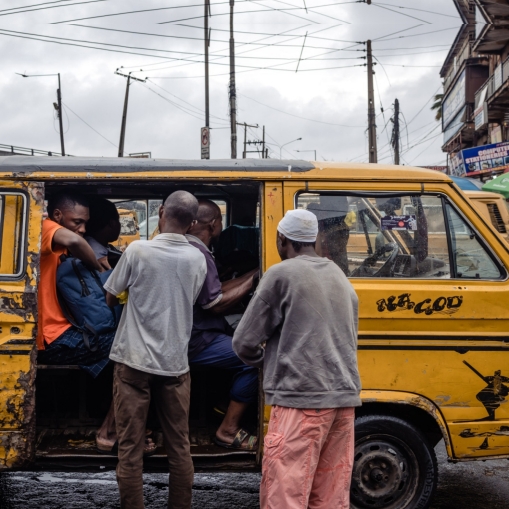Share This Article
A picture is worth a thousand words. A look at an artist mixed media art rendition of Wizkids’ “Made in Lagos” album with the original Danfo bus (kombi) in the background, which was initially made and assembled in Germany by Volkswagen but imported into Nigeria like every other durable consumer goods through international trade.
“Danfo” means hurry in the Nigerian Yoruba language, which connotes agility. When Lagos was still the capital of Nigeria in the early 60s. The Volkswagen Kombi bus was the city’s primary quintessence of public transport. The bus is designated by design and moves swiftly through the streets, and passengers must also hop in as it sometimes doesn’t stop at the assigned bus station.
This is because the city embodies the epitome of the Nigerian dream or what is called the “Naija” spirit, and it’s bustling with men and women of different cultures who came from different parts of the country in the 60’s when the Volkswagen vintage bus – vw2 was the hallmark of German design.

Moreover, Lagosians see Lagos as a land of opportunity, and through daily hustling, they try to make sure they meet their daily ends, as some of the buses in the 90s were bought through hire purchase.
The term “Danfo” was then socially engineered into the subculture of the people. As time passed, it became a cultural phrase of what Lagos signifies. The Danfo buses later adopted various car brands and models that have been pimped up with benches made by a local welder and with wood for seats. Still, some bus owners are generous enough to add upholstery for comfort and the trademark yellow colour with black stripes.
Some also have sliding windows cut into the sides because the buses were initially made for cargo rather than people.
The generic Danfo bus is a Volkswagen Vanagon. So, Danfo is made in Germany (kombi) but subcultured in Nigeria with the designated yellow colour and black stripes.


